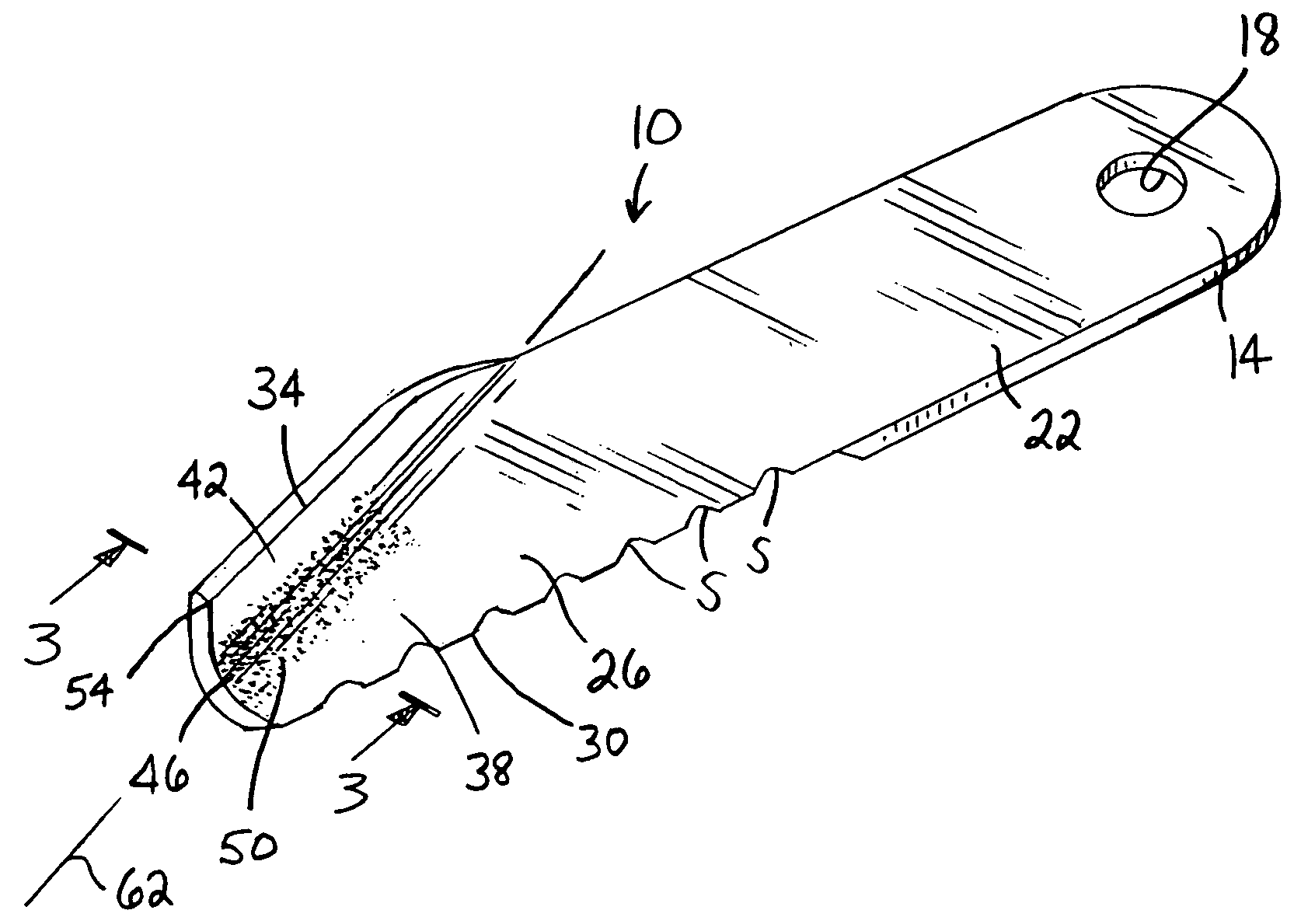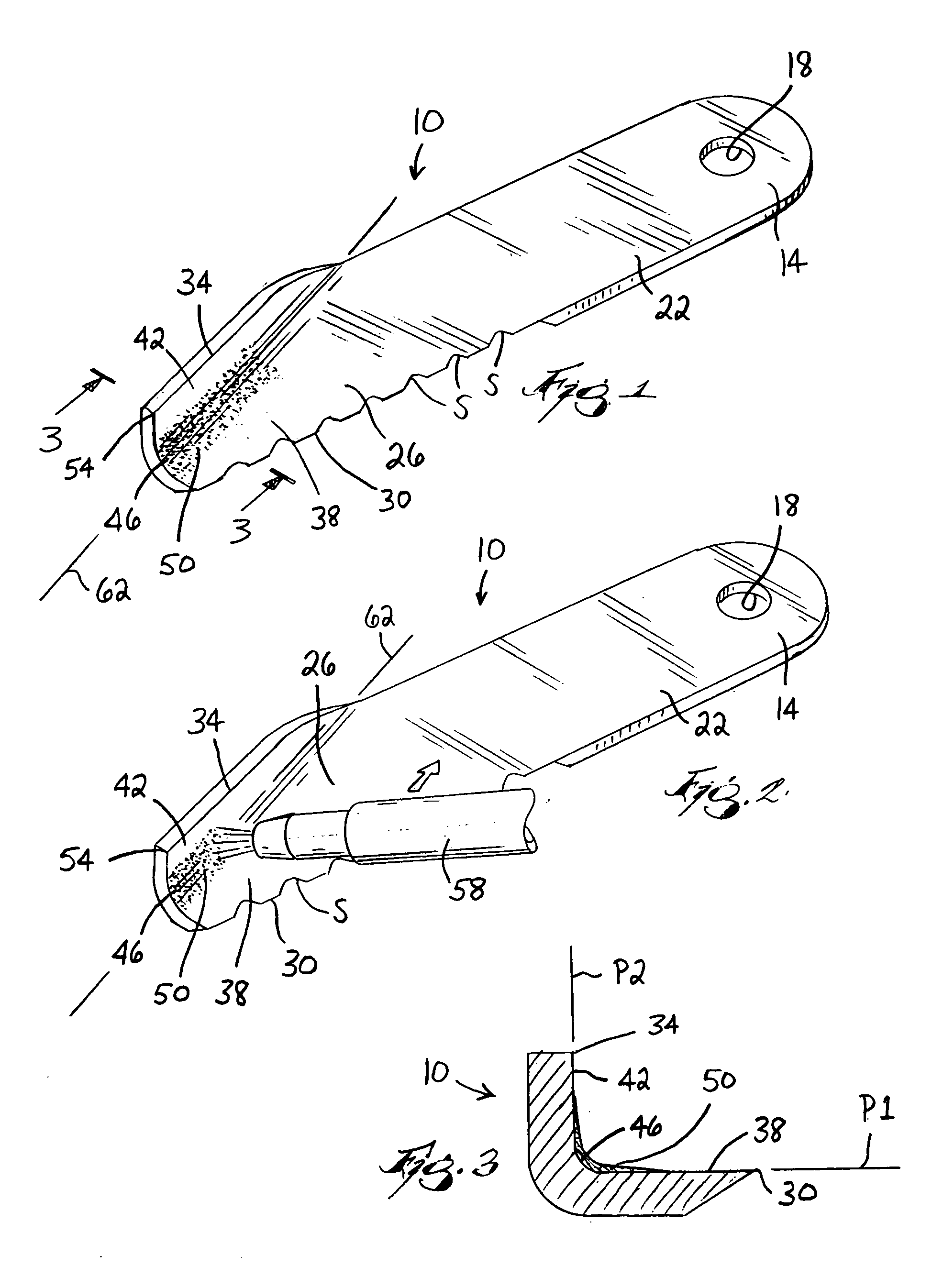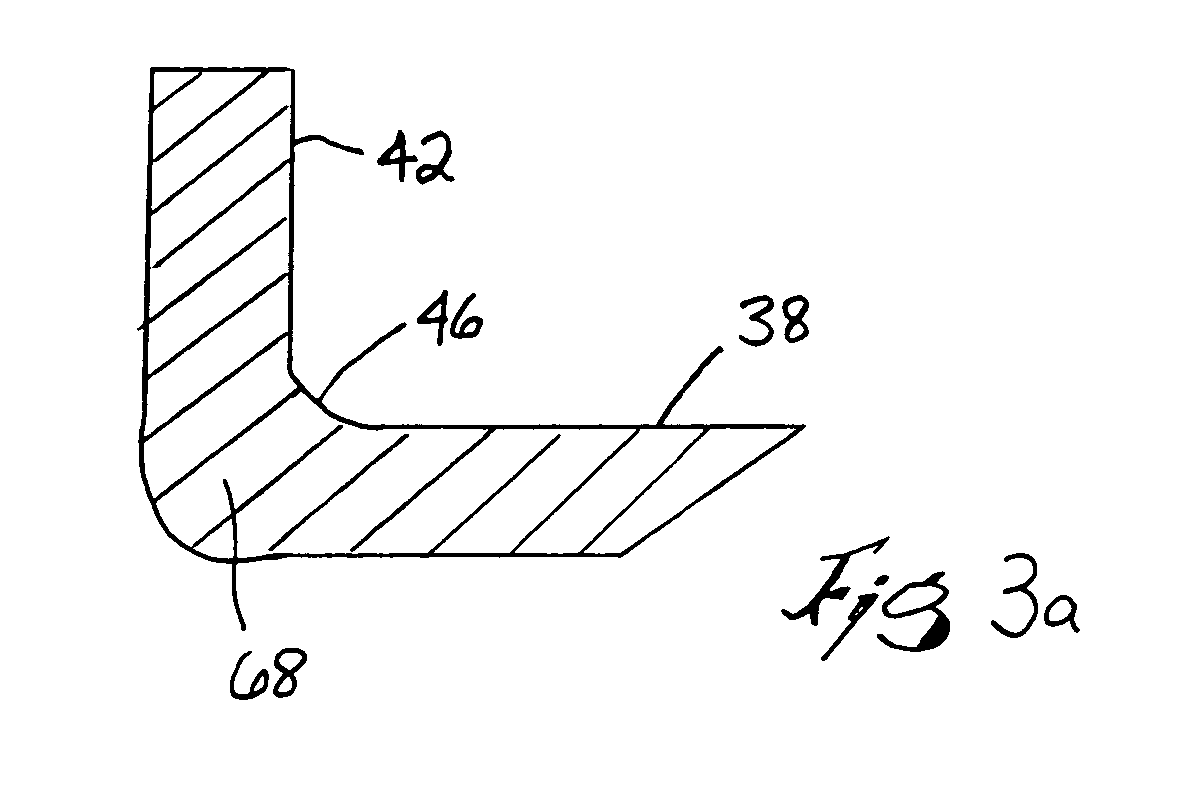Wear resistant cutting blade
a cutting blade and wear-resistant technology, applied in the field of cutting blades, can solve the problems of blade wear generally beginning from the tip of the trailing edge inward, blade will likely be replaced, cutting edge dulling, etc., and achieve the effect of not prematurely weakened blade parts
- Summary
- Abstract
- Description
- Claims
- Application Information
AI Technical Summary
Benefits of technology
Problems solved by technology
Method used
Image
Examples
Embodiment Construction
[0023]FIGS. 1-3 illustrate a blade 10 embodying the invention. The illustrated blade 10 is of the type commonly referred to as a straw chopping blade. However, as will be discussed in more detail below, the invention is not limited in application to straw chopping blades, but rather can be used with any style or type of cutting blade having one or more bent or otherwise formed portions that create radiused areas of high pressure and turbulence.
[0024] The blade 10 includes a mounting portion 14 having therein a mounting hole 18 for securing the blade 10 to a rotating member (not shown). A body portion 22 extends from the mounting portion 14 to a working portion 26. The blade 10 further includes a leading or cutting edge 30 and a trailing edge 34. In the illustrated embodiment, at least a portion of the cutting edge 30 is beveled and includes serrations S for improved cutting performance, however, different cutting edge configurations can also be used. For example, the cutting edge 3...
PUM
| Property | Measurement | Unit |
|---|---|---|
| angle | aaaaa | aaaaa |
| thickness | aaaaa | aaaaa |
| depth | aaaaa | aaaaa |
Abstract
Description
Claims
Application Information
 Login to View More
Login to View More - R&D
- Intellectual Property
- Life Sciences
- Materials
- Tech Scout
- Unparalleled Data Quality
- Higher Quality Content
- 60% Fewer Hallucinations
Browse by: Latest US Patents, China's latest patents, Technical Efficacy Thesaurus, Application Domain, Technology Topic, Popular Technical Reports.
© 2025 PatSnap. All rights reserved.Legal|Privacy policy|Modern Slavery Act Transparency Statement|Sitemap|About US| Contact US: help@patsnap.com



